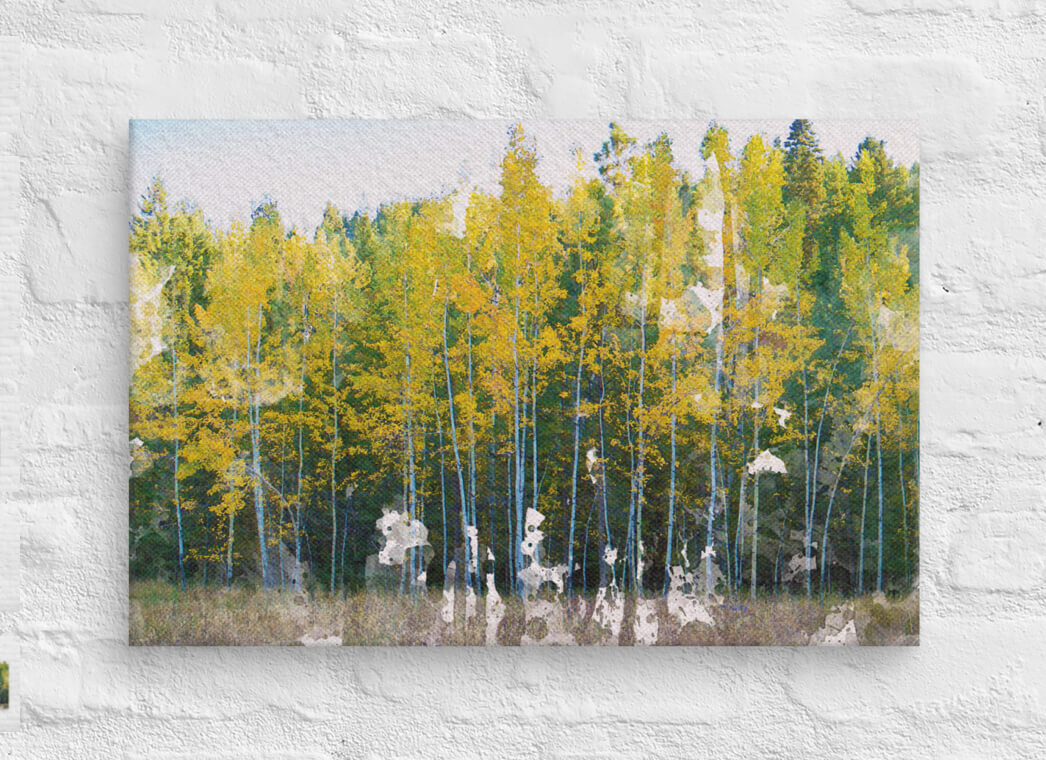If you grew up surrounded by birch trees, you may have noticed their elegant white trunks and delicate leaves are becoming a less common sight. Once a staple of many North American and European landscapes, birch trees are now in decline in several regions. But what’s causing this decline, and why does it seem like we’re seeing fewer of these iconic trees?
For those who miss the sight of birch trees, one way to bring their beauty back into your space is through art. A watercolor canvas art print of birch trees, like this one available for sale, captures the grace and natural beauty of these trees in a way that endures, making it an ideal addition to any home decor.
1. Climate Change and Birch Tree Decline
One of the primary reasons for the decline of birch trees is climate change. Birches are generally suited to cooler climates, thriving in regions with cold winters and temperate summers. As global temperatures rise, the climate in these regions is shifting, causing stress on birch populations. Warmer temperatures can lead to:
- Increased pest activity: Higher temperatures are ideal for pests like the bronze birch borer, a beetle that targets stressed birch trees, leading to widespread damage and tree death.
- Drought stress: Birches are relatively shallow-rooted and depend on regular moisture. As droughts become more common in many areas, birch trees are struggling to survive.
The combination of pests and drought can weaken and kill birch trees, making it more difficult for these trees to thrive and regenerate in areas where they once flourished.
2. Pests and Disease Impacting Birch Trees
The bronze birch borer is one of the most damaging pests to birch trees. This small beetle lays its eggs in the bark of birches, and the larvae then burrow into the tree, disrupting nutrient flow. Birch trees already weakened by environmental stress are especially vulnerable to these beetles, which have caused widespread damage in areas with warmer-than-usual temperatures.
In addition to the bronze birch borer, birches are also susceptible to diseases like birch leafminer and fungal infections. These diseases can stunt the tree’s growth, cause leaf drop, and eventually weaken the tree’s overall health.
3. Habitat Loss and Development
The loss of birch trees can also be attributed to urban and suburban development. As cities expand, natural habitats are cleared, and birch trees are often removed to make room for roads, buildings, and infrastructure. This trend is particularly pronounced in places where birches are naturally present in lowland forests or open fields. In many areas, birch trees that used to line country roads and neighborhoods have disappeared as urban areas grow and change.
4. Shorter Lifespans in Urban Settings
Even when birch trees are planted in urban areas, they often have shorter lifespans than those in natural settings. Urban environments expose trees to pollution, compacted soils, and limited root space, which can stress birches, leading to shorter lifespans and increased vulnerability to pests and diseases.
5. The Changing Ecosystem
Birch trees also play a specific role in forest ecosystems, providing food and shelter to various species. As birch populations decline, other species that depend on them, such as certain insects and birds, are also impacted. This can lead to shifts in local biodiversity, where the loss of one species affects others in the ecosystem, leading to a cascade of ecological changes.
How to Bring the Beauty of Birch Trees into Your Home
If you’re missing the sight of birch trees, adding artwork to your home can help keep their memory alive. A watercolor print of birch trees, like this beautiful option, captures their iconic white bark and delicate leaves, bringing a touch of nature indoors. This print not only adds elegance to your decor but also serves as a reminder of the beauty and fragility of birch trees.
Birch tree artwork is popular for its calming, natural look and ability to complement various decor styles. Whether you hang it in your living room, bedroom, or office, a birch tree print brings warmth, tranquility, and a bit of nostalgia for the natural landscapes we may not see as often anymore.
Conclusion: Supporting Birch Trees
While climate change and urban development continue to impact birch populations, there are ways to support the survival of these trees. Advocating for conservation efforts, supporting reforestation programs, and planting birches in suitable environments can help maintain birch populations in the wild.
In the meantime, if birch trees hold a special place in your heart, bringing their image into your space through artwork is a great way to keep their memory alive. A watercolor framed art print of birch trees is a lasting tribute to these iconic trees, capturing their delicate beauty even as they become harder to find in nature.




